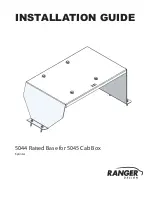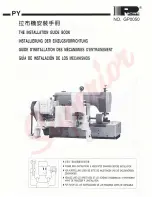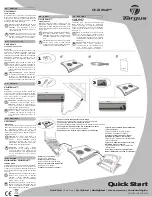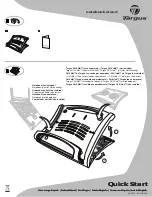
Specifications
AC Power
90-250 VAC, 43-63 Hz
Software
Windows 95/98/2000, Windows NT
Network Interface Modules
Single Port T1/E1, Dual Port T1/E1, 4 Channel POTS, 8
Channel POTS
Capabilities
Programming Interface
Can be programmed and controlled via an RS-232 serial
connection to a PC, or an RJ-45 ethernet connection to a PC
or a LAN
Call Types Supported
Call Originate
TSP places calls to the device under test
Call Terminate
TSP receives calls from the device under test
End to End
Calls placed through the TSP by one device to another. Four
call types are available:
Dialed (for dynamic routing by assigning a telephone number
to each channel)
Switch Emulation (simulates call through the central office
with any two channel protocols except Clear Channel)
Channel Bank (for T1/E1 loop start foreign exchange channel
to POTS channel)
Clear Channel (for 64 Kbps data)
Phone Numbers
Up to 16 digits on all POTS and T1/E1 channels
Message Playback
Up to 8 seconds long, mu-law or a-law encoded, 8 kHz, 8 bit
WAV files assigned to play after call is established for Call
Originate and Call Terminate operation
Simulator Activation
Manual or timed
Diagnostics
Monitor and manual control of signaling state on channels
Protocol Analyzation
Monitors the AB bit states for D4 and ABCD bit states for ESF on
T1 channels and E1
Event Log
Time stamped listing of system and channel specific events and
call records
T1/E1 Interface
Connector Standard
RJ-48C
Transmit Level
2.37 Volts (Nominal) for 75 Ohms;
3.00 Volts (Nominal) for 120 Ohms
T1 Parameters
Framing Formats
D4 or ESF
Line Coding
AMI or B8ZS
Clocking
Internal or External
Line Build-out
0-655 feet or –7.5 dB to –22.5 dB line loss
E1 Parameters
Signaling Formats
FAS or CAS
Line Coding
AMI or HDB3
Impedance
120 ohms
Signaling Protocols
ITU Q.421, Wink Start (i.e. E & M), Immediate Dial, Delay Dial,
Loop Start FXS, Loop Start FXO, Ground Start FXS, Ground
Start FXO, Clear Channel (64 Kbps, no signaling)
DTMF Generation
Generates up to 16 DTMF digits in band on the T1/E1 channel
when placing a call into the equipment under test
40-400-00049, Rev. J
Page 81






































